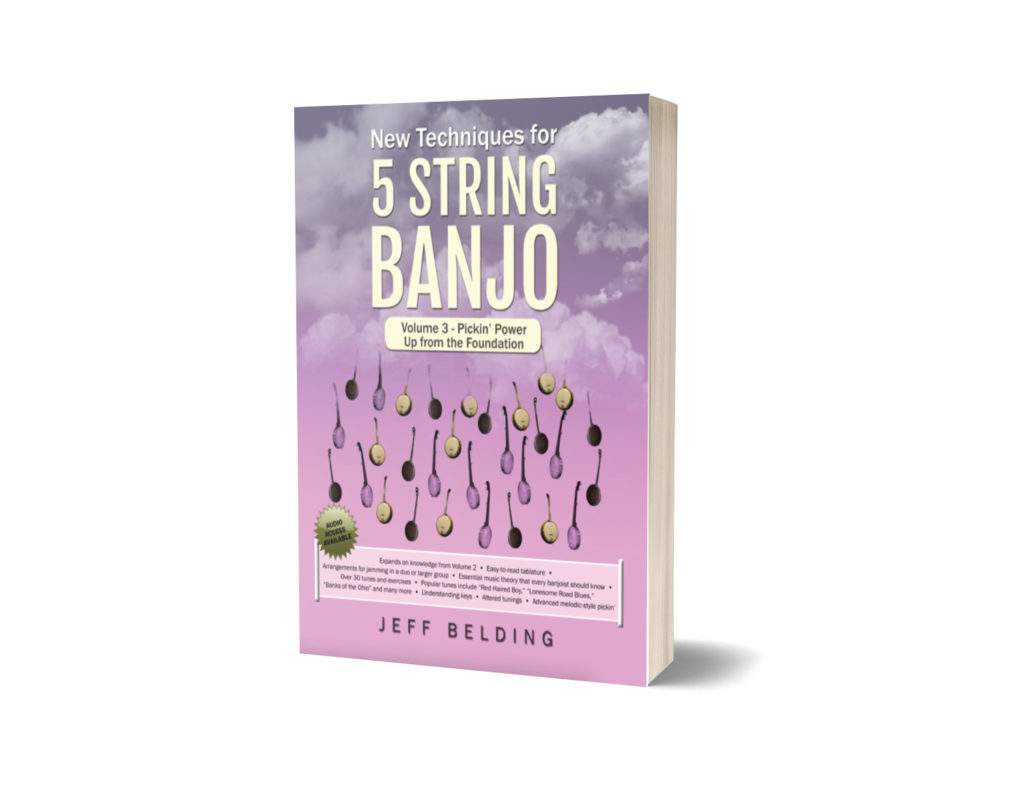
This is the final installment of the New Techniques for 5-String Banjo Trilogy. Volumes 1 and 2 laid some foundational material from basic picking techniques to more complex fiddle tunes arranged for banjo. Volume 3 builds on that foundation with more advanced tune arrangements, scale and chord construction, and other important aspects of music theory. It’s available here on Amazon.
So, think of Volume 3 as a banjo songbook with a smattering of music theory lessons here and there. Some chapters focus on new tablature and licks, while others are devoted to the “music-theory curious.”
Perhaps you’re looking for new ways to pick the same old songs. From “The Banks of the Ohio” to “Way Downtown,” you’ll find new licks, new tricks, and up-the-neck acrobatics! Volume 3 also expands on your all-important fiddle tune repertoire that began in Volume 2, including such classics as “Red Haired Boy” and “Cherokee Shuffle.”
The free audio access methodically talks you through the entire book. And, there are over 30 banjo/guitar duets to help prepare you for the “real world” of bluegrass jamming.
Between the text and the audio explanations, you will become well-versed in playing any major or minor chord. You may never need a chord encyclopedia again!
How about playing in virtually any key without ever having to clamp on a capo? Some of the sample tunes presented can change your way of approaching such keys as C, E, D, F, A minor, and D minor–encouraging you to play in these “oddball” keys capo-free!
Other progressive concepts and ideas for the more-advanced banjoist include:
- The Chromatic Scale—An essential piece of music theory knowledge. This takes the “guesswork” out of how barre chords and other chord shapes get their names.
- Melodic Banjo–The melodic G scale gets expanded to two full octaves. Sample tunes extract useful licks out of this scale.
- Pentatonic Scales–For various keys and how to use them in a tune.
- Alternative ways to tune your banjo–C tuning and D tuning. Common chord fingerings for these tunings and how to manipulate them.
- The Circle of Fifths–Where it came from, and how it is organized. It is presented to illustrate the concept of back-cycling through a chord progression.
- Chord Inversions–For both major and minor chords. How to transfer these chord inversions up and down the banjo neck, giving you a powerful grasp of chord-theory knowledge.
New Techniques for 5-String Banjo, Volume 3 takes you “Up from the Foundation” that was laid in Volumes 1 and 2. By the time you complete this book, I believe you will be transformed from “just another banjo picker” to a full-fledged musician!
